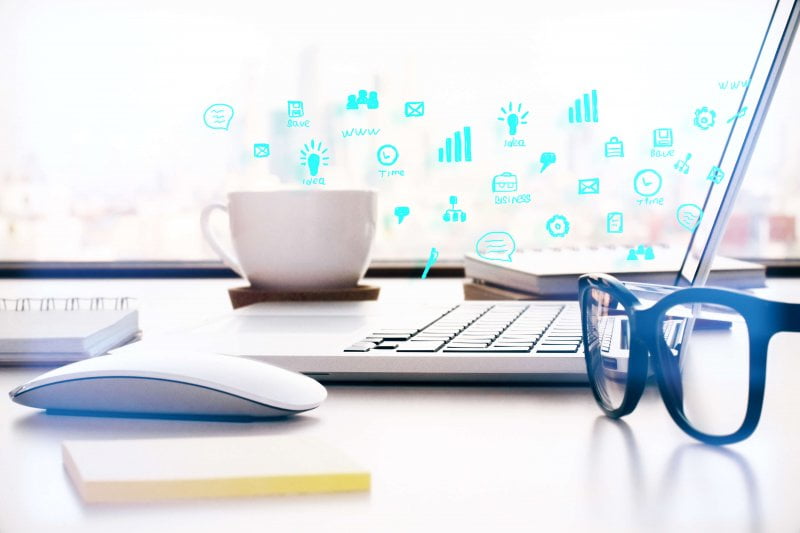
With the beginning of a new year, it is only natural to speculate on what it will bring. The tech world is not excluded from this speculation. From lots of autonomous car activity to a surge in VR(virtual reality) products, 2016 was an exciting year. But what about 2017?
With the proliferation of internet connected devices in 2016, the internet of things(IoT) will no doubt gain even more traction in 2017. In 2017 it will be no stretch of the imagination to see more and more connected devices networked and sharing information via the internet, making our lives more efficient and ultimately more convenient. More connected devices means smarter homes, smarter cars and smarter everything in general. But what other tech trends will we see in 2017?
Smarter Homes
Already we can do amazing things such as control lighting systems such as the Phillips Hue directly from our smartphones. There are also smart thermostats which can be controlled similarly.
We can also monitor our home security systems over the internet; imagine all of the other possibilities for controlling other home equipment in 2017 as the IoT expands.
Smarter Cars/Autonomous Cars
Autonomous cars were all the rage in 2016. These cars which have the ability to drive themselves to some degree could revolutionize the transportation sector. Players such as Google, Tesla and even Uber have mounted self-driving projects.
In 2017, you may see self-driving improve to a point where the cars are able to operate with even higher degrees of freedom. In addition, more regulatory framework is likely to be put into place to allow for the safe operation of these vehicles on roads across the globe.
If your car can drive itself then you will probably agree that it is quite smart but in 2017 our cars might become smarter in other ways. We already have Android Auto which allows for advanced communication between Android devices and a car’s infotainment system and we can probably expect to see more vehicle manufacturers supporting such initiatives.
As it relates to the IoT, we couldsee development of advanced initiatives where vehicles might be able to do things suchasreceive data directly from road systems.
Cloud Storage
In 2017 cloud storage will probably be adopted more and more by consumers. We can probably also expect to see more services popping up with relatively large free packages to compete with Dropbox’s rather tiny 2GB. Despite this small free package offered by Dropbox, they seemed to have held their own so far and the name is ubiquitous when it comes to cloud storage. Maybe 2017 will be the year they increase from 2GB.
Cybercrime
Cybercrime has become increasingly prevalent over the years but 2016 was particularly bad. On October 21st, 2016 a cyber attack was launched against Dyn, a company which provides important internet services for companies such as Reddit, Spotify and Twitter. This attack meant that users in the eastern part of the US were unable to access these services for part of that day. Unfortunately, in 2017 this upward trend of cybercrime will most likely continue.
Protecting your online privacy should be your top priority in 2017. Most of the people are using firewall, but a VPN is also essential – not just when it comes to watching your favorite BBC shows in the USA.
Wearable Technology
Wearable technology is slowly taking root. Although many manufacturers expected better sales for 2016 as seen by Pebble’s closure, the technology is quite popular among the fitness community. In 2017, we can probably expect to see a more fitness focused approach to wearable devices.
We also need to see improvements in the average battery life of smartwatches. Devices such as the Apple Watch will not give you more than 2 days of uptime. Pebble was the one company who was good at this with their Pebble Time Steel offering up to 10 days of battery life. Hopefully 2017 will bring improvements to what is honestly mostly dismal battery life at the moment.
Virtual/Augmented/Mixed Reality
To clarify before we go on, virtual reality(VR) refers to a completely made up environment, augmented reality(AR) refers to an environment displayed to the user which is made up of their actual physical surroundings but with some virtual elements while mixed reality(MR) refers to a virtual environment with some real elements mixed in.
In 2016 we saw lots of talk about virtual reality(VR), especially with the release of the Oculus Rift. Virtual reality devices represent a completely new way in which we can consume media or even learn new skills. Take Samsung’s eFearless VR app for example. It allows persons to practice their public speaking in a safe, virtual environment, allowing for confidence building in what can be a terrifying activity.
In 2017 we can expect to se this technology take root even further. More and more devices will be able to support VR in 2017.
As for mixed reality; mixed reality will follow naturally from VR. VR can be quite immersive so it would be nice in 2017 to see elements integrated from the real world into previously fully VR applications, aimed at preventing persons from being so immersed that they injure themselves.
We have all seen the success of Pokémon Go. This AR game saw persons chasing and capturing Pokémon characters in the real, built environment. Riding on the success of this, it is only natural to expect more AR games to pop up in 2017. AR can also be found in Google Translate where users can use their device cameras to translate text by simply holding the device over a body of foreign text. More applications such as this could pop up in 2017 as well.










